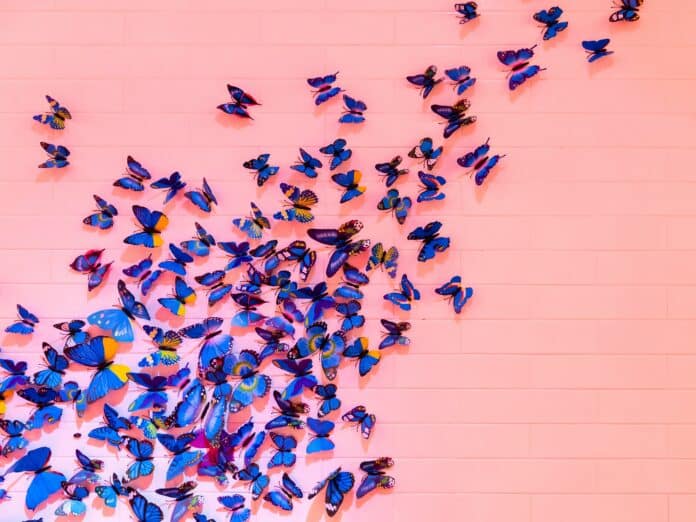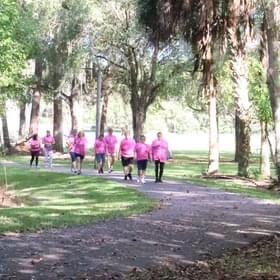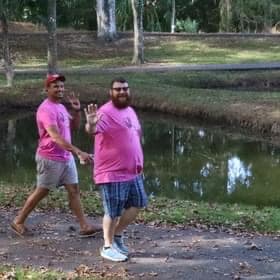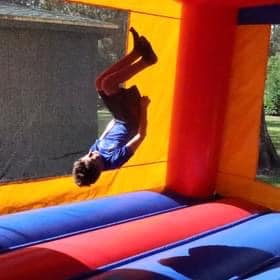The butterfly is at once a symbol of grace and strength. At the Chasing Butterflies Walk, 9:30 am on Saturday, Oct. 7, at Anderson Snow Park, 1360 Anderson Snow Road, in Spring Hill, the human embodiments of these magnificent creatures will join together in a symbolic flight and fight for an excellent cause. Proceeds from this walk will benefit the Turner Syndrome Society of the United States.
According to the Turner Syndrome Society website, TS is “a chromosomal condition that usually describes girls and women with common features, physical traits, and medical conditions caused by the complete or partial absence of the second sex chromosome. In recent years, men and boys have received diagnoses of Turner syndrome, and our organization recognizes their needs. It’s estimated that one female out of every 2,000 to 4,000 is born with Turner syndrome. Turner syndrome occurs in 1–2% of conceptions; unfortunately, only 1% of those survive through pregnancy. We consider every child and adult with TS a real miracle. TS occurs when all or part of one of the second sex chromosomes is missing or abnormal before or soon after conception.” (https://www.turnersyndrome.org/copy-of-ts-overview).
Shannon Rodgers, a Brooksville native, stands among those with Turner syndrome. For four years, she has coordinated the Chasing Butterflies Walk in Hernando. This walk is a national signature fundraising event for TSSUS. The walk, which raises funds and awareness for TS, is named on behalf of a winged creature known for its delicacy and resiliency.
“I have Turner syndrome. I found out I had it when I was around 13 years old,” she explained. “I went to the doctor because of a bad earache, and he recognized the characteristics and told my mom to take me to get a karyotype blood test done to confirm I had it.”
Rodgers’ mission is to spread awareness about the condition that has profoundly affected her life. “The reason I do the walk is to raise awareness for Turner syndrome; it’s not well known,” she said. “I also do it to raise money for the Turner Syndrome Society of the US, located in Texas. They are a nonprofit organization with the mission of advancing knowledge, facilitating research and helping people affected by Turner syndrome. They hold annual conferences in different places each year around the US. The conference provides lectures from specialists on all types of issues caused by TS. It also allows time for fellowship with others who have TS. They have activities as well.”
The Chasing Butterflies Walk will commence at 12:30 pm at Anderson Snow Park.
“There will be three places along the walking route where everyone can stop and take selfies. It’s a Chasing Butterflies selfie walk.
Other event activities will include raffles, face painting, a bounce house, vendors, a silent auction and free slushies. The walk is also known for frequent appearances by area health experts, who provide information regarding Turner syndrome and its effects.
“I also try to get a few resources to come to the walk as well, like a representative from Kids Central, because most females with TS are infertile,” said Rodgers. “Also Dr. Crenshaw, who heads the TS Clinic at John Hopkins All Children Hospital.”
Registering for the Chasing Butterflies Walk costs $26.50 for adults and $16.50 for children ages 6–17. Children five and under will be admitted for free. For more information, visit https://www.facebook.com/events/1025423145169276.
Join the Turner Syndrome Foundation (TSF) in its Butterflies Around the World event this month. Download and print your butterfly, decorate it to your liking, and take it on your end-of-summer or back-to-school adventures. Take photos of you and your butterfly, submit them to TSF, and they will be featured in a September blog post. Spread your wings and join the Turner Syndrome (TS) kaleidoscope!
Why the butterfly?
Butterflies represent hope, rebirth, life, and change. So how did the butterfly become a symbol for TS, and why are those with TS often referred to as butterflies? Someone asked us recently, and we didn’t have a great answer. So we did a little research. As Karen, a woman with TS, recently said in a TSF Facebook Live performance event and discussion, it may be because butterflies are delicate but strong. Or because they are small but make a significant impact on the world. Or maybe because they are diverse and come in many beautiful colors and patterns, like individuals with TS.




